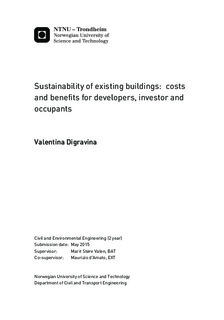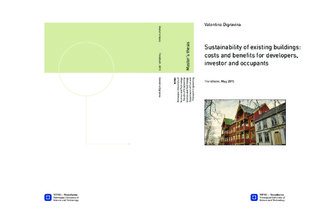| dc.description.abstract | Due to the emission of greenhouse gases, the Earth's temperature is rising. Different studies show that buildings consume about 40% of all energy used: the sustainable regeneration of existing buildings is a useful way to reduce energy consumption and greenhouse gases.
The success of the use of green building practices also provides for improved productivity and user performance. The Facility Manager plays a relevant role in this contest. He knows that, considering the whole life cycle of the building, it is possible to compare the technological solutions and the related costs, to anticipate and facilitate the choice of durable materials and environmentally friendly, to allow a planned management, predict and extend the life of a building.
The building being studied is Thingvallagården, built in the 19th century, in Trondheim, NTNU properties, now under renovation.
This intervention of retrofitting places the building in energy class equal to D. For this reason, it has been assumed economic-environmental solutions concerning the building envelope, identifying energy efficiency improvements, in order to make it Low Energy Building and Passive House.
The strategies have affected the variation of the thickness of insulation on the facade, in the roofing and in the bottom floor, considering the different thermal conductivity of materials.
It has been identified the effect that each different insulation material, such as wood fiber Hunton, Rockwool mineral wool, glass wool Isover 1, glass wool Glava 2, has on total costs and emissions with a view of the life cycle of building.
The initial working assumption has led to consider for each package of shell the same insulation and the resulting environmental-economic effect. Later on, it has been assumed the combination of glass wool Glava, which is more cost effective, and wood fiber, which is most environmentally advantageous, getting six additional interesting hypothesis of intervention. These six oprions advanced a right compromise between the cost and the emission of CO2 eqv into the atmosphere.
Although it is not exhaustive, this project analysis could guide the choices made by the actors of the building process.
Keywords:
- Retrofit
- Low Energy Building
- Passive House
- Facility manager
- LCC
- LCA | |

